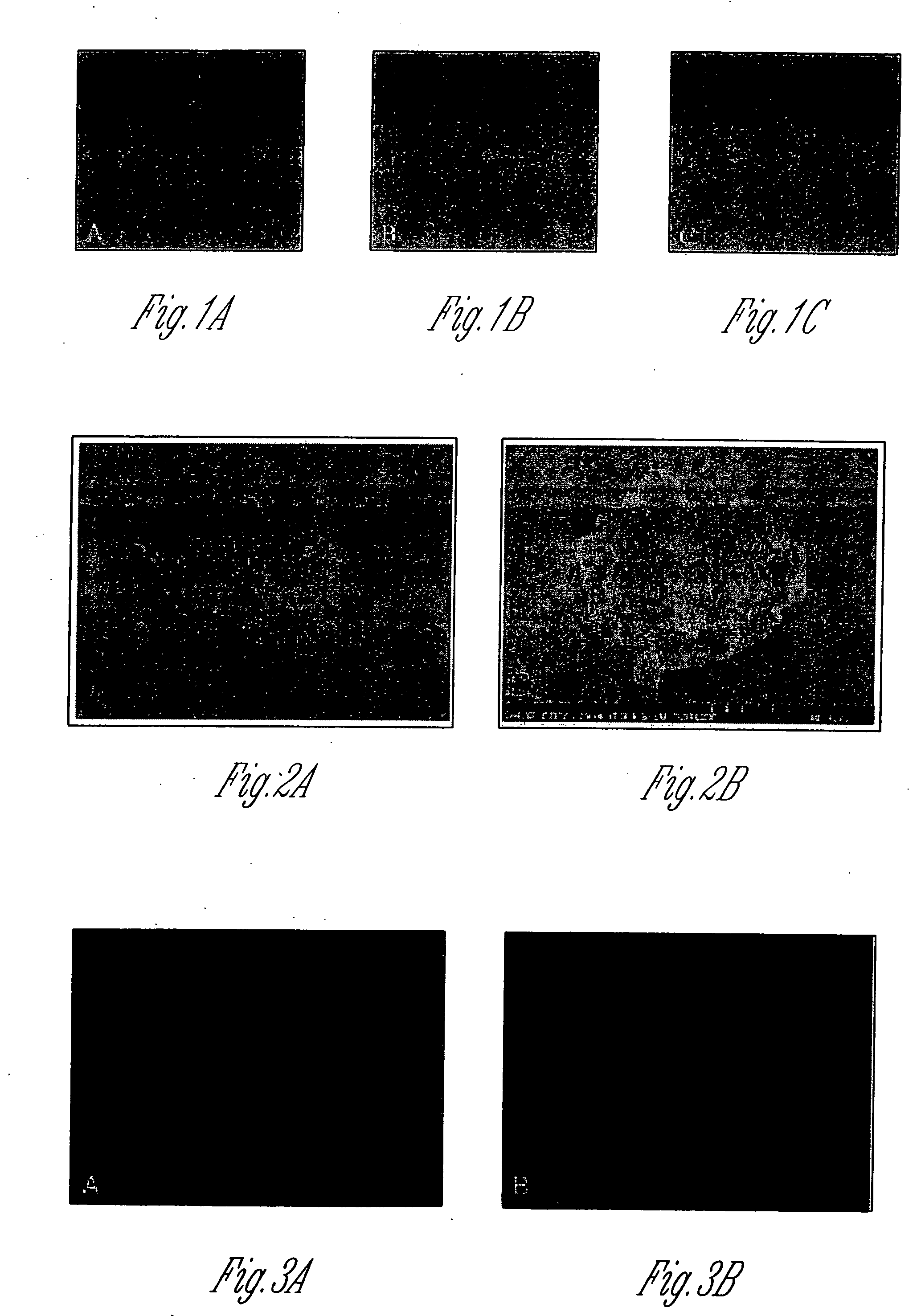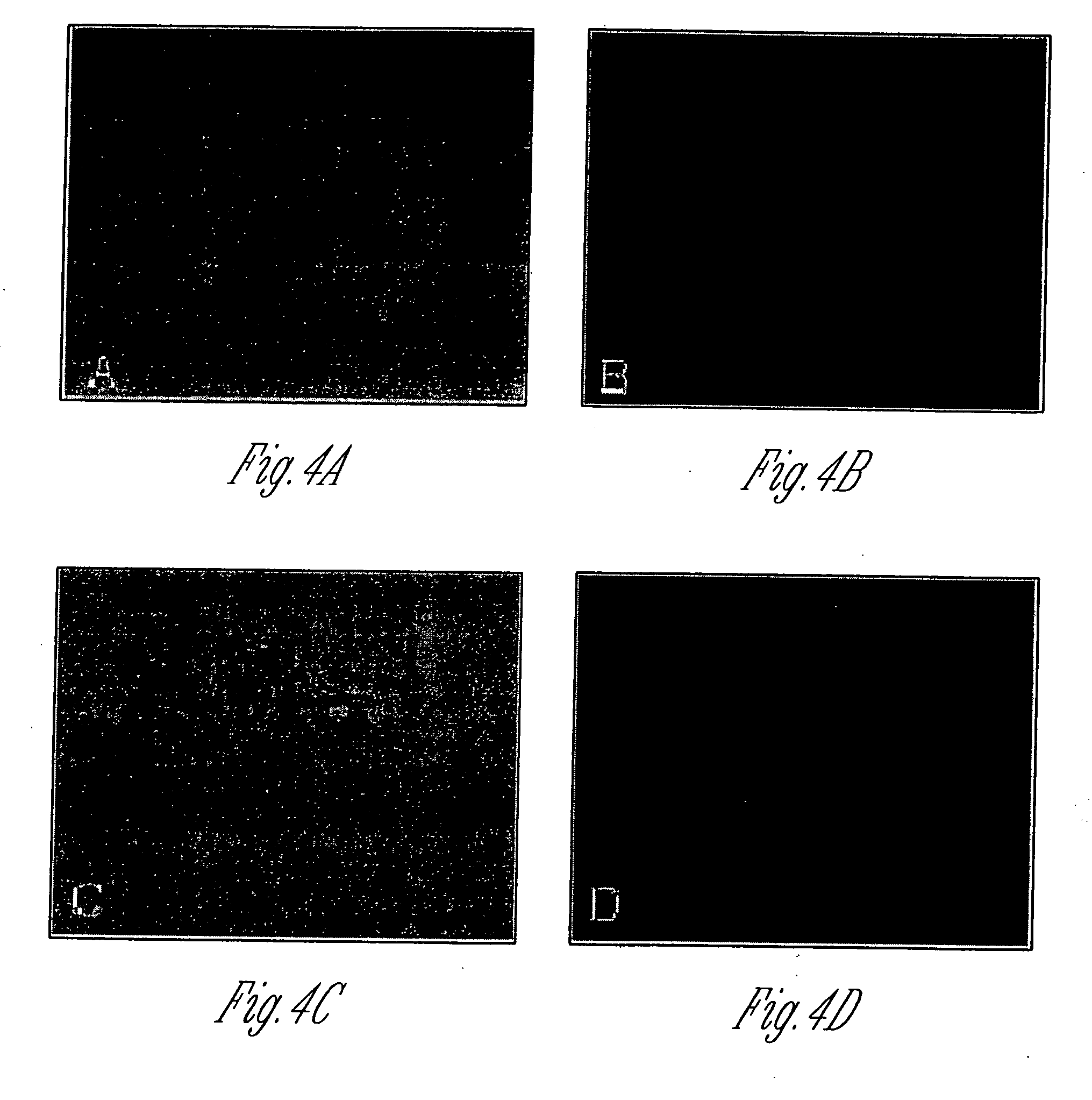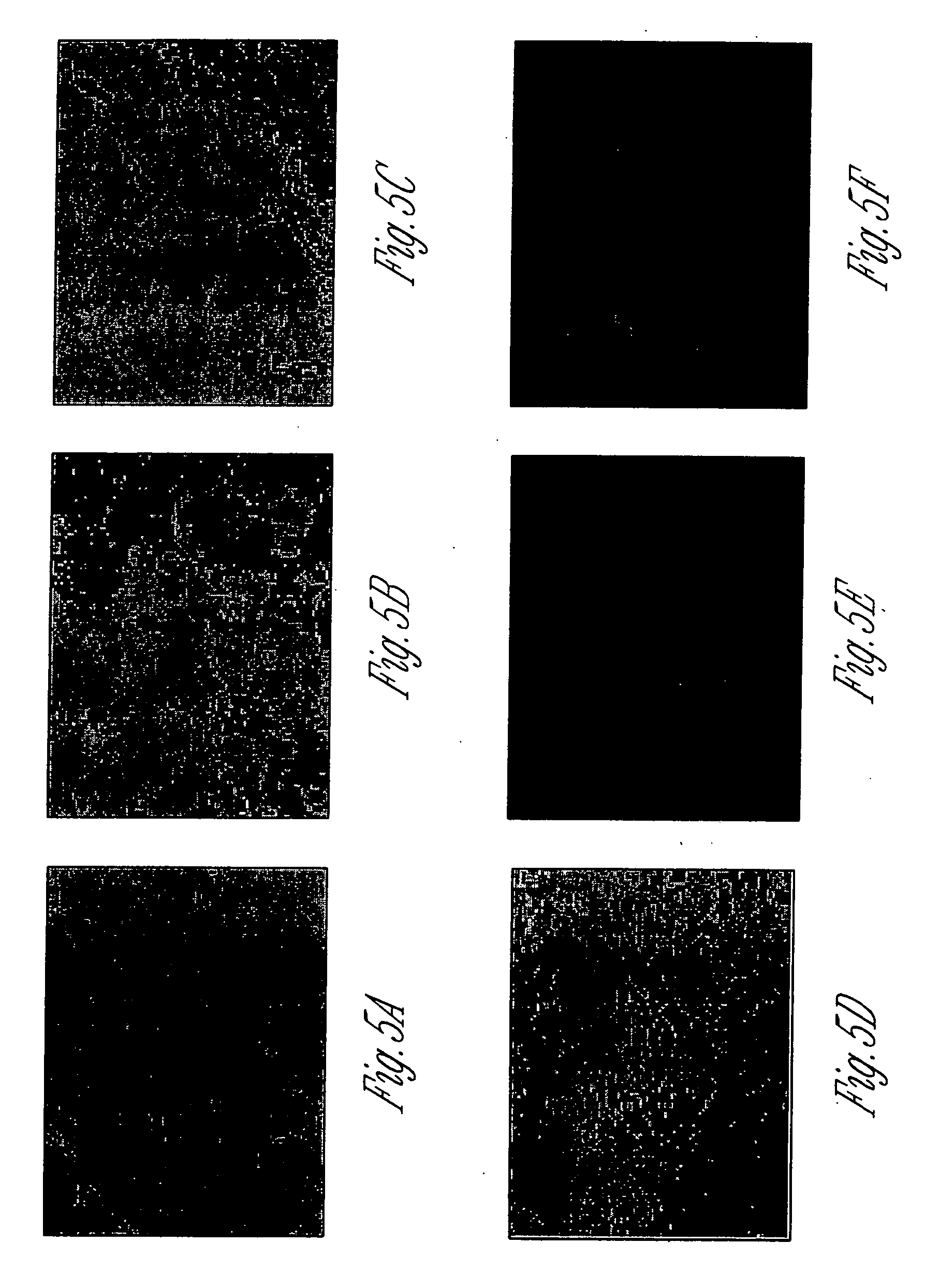Kidney derived stem cells and methods for their isolation, differentiation and use
a technology of stem cells and kidneys, applied in the field of kidney stem cells and cell isolation, can solve the problem of small contribution of extra-renal cells to the regenerative renal response, and achieve the effect of facilitating kidney regeneration and facilitating kidney regeneration
- Summary
- Abstract
- Description
- Claims
- Application Information
AI Technical Summary
Benefits of technology
Problems solved by technology
Method used
Image
Examples
example 1
Isolation of Kidney Progenitor Cells (MRPC)
[0116] The source for the mouse kidney cells included 2-4 month old C57B1 / 6 ROSA26 mice transgenic for the β-galactosidase gene. In addition cells were isolated from the kidneys of FVB mice containing a transgene consisting of the Pax-2 promoter controlling eGFP protein expression (gift from Dr. Michael Bendel-Stenzel, U. of Minnesota). The source for the rat kidneys included 2-4 month old Fisher rats including Oct-4 β-Geo transgenic rats that contain a transgene that combines a neomycin-resistance gene with a lacZ reporter under the control of 3.6 kb of the mouse Oct-4 upstream sequence including both proximal and distal enhancers (gift from Dr. Austin Smith, U. of Edinburgh) [36]. This strategy allowed for direct selection of Oct-4 expressing cells by including G418 in the culture medium. Oct-4 is associated with pluripotency.
[0117] Kidneys were harvested immediately following euthanasia, partially digested and the cell suspension plate...
example 2
FACS Analysis for Surface Markers
[0118] Cell surface markers present on the MRPCs was analyzed via FACS. The cytometric analysis was performed on a FACSAria flow cytometer (Beckton Dickinson, San Diego, USA). Dead cells were excluded with 7AAD, doublets were excluded based on 3 hierarchical gates (forward / side scatter (FSC / SSC) area, FSC height / width and SSC height / width). Unstained cells and corresponding isotype-antibodies were used as negative controls. For each reaction 5,000 events were counted. The antibodies used included: mouse anti-rat CD90-PerCP, CD11b-FITC, CD45-PE, CD106-PE, CD44H-FITC, RT1B-biotin, RT1A-biotin, CD31-biotin (all from Beckton Dickinson, San Diego, USA), and purified anti-mouse SSEA-1 (MAB4301 from Chemicon, Temecula, USA). Mouse ES cells were used as a positive control for SSEA-1 and fresh rat bone marrow cells were used for other markers. The results of the cell surface marker analysis are depicted below in Table 1.
TABLE 1CD90POSITIVECD44POSITIVE / LOWM...
example 3
DNA Analysis and Cytogenetics of Rat MRPCs
[0120] Rat MRPCS were cultured for over 200 population doublings while maintaining their original phenotype and appearance. DNA analysis by FACS confirms that the MRPCs at 200 population doublings are 100% diploid without evidence for polyploidy (FIG. 7) and cytogenetic abnormalities.
[0121] Additionally, telomere length and telomerase activity were investigated at 90 and 160 population doublings (FIG. 8). To investigate telomere length, DNA was prepared from cells by standard methods. 2 μg of DNA was digested overnight with HinfIII and RsaI. The resulting fragments were run on a 0.6% agarose gel and vacuum blotted onto a (+) nylon membrane. The blot was then probed overnight with a digoxigenin (DIG)-labeled hexamer (TTAGGG). Next, after washing, the blot was incubated with anti-DIG-alkaline phosphatase for 30 minutes. Telomere fragments were then detected by chemiluminescence. No telomere shortening was observed.
[0122] To investigate telo...
PUM
| Property | Measurement | Unit |
|---|---|---|
| population doubling time | aaaaa | aaaaa |
| time | aaaaa | aaaaa |
| time | aaaaa | aaaaa |
Abstract
Description
Claims
Application Information
 Login to View More
Login to View More - R&D
- Intellectual Property
- Life Sciences
- Materials
- Tech Scout
- Unparalleled Data Quality
- Higher Quality Content
- 60% Fewer Hallucinations
Browse by: Latest US Patents, China's latest patents, Technical Efficacy Thesaurus, Application Domain, Technology Topic, Popular Technical Reports.
© 2025 PatSnap. All rights reserved.Legal|Privacy policy|Modern Slavery Act Transparency Statement|Sitemap|About US| Contact US: help@patsnap.com



